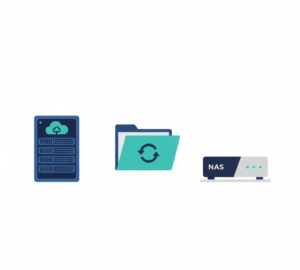Secure Your Cloud Transfers: Protect Your Business Data
Imagine this: Your business data is on its way to the cloud, but on the way, one weak link can compromise all of your sensitive data. Here we go through some actionable steps and backup solutions that could make your cloud transfers secure and protect your business data every step of the way.
Why Data Security Matters in Cloud Transfers?
When data is being transferred to the cloud, it presents a variety of risks: interception, use by unauthorized individuals, or even corruption. It is necessary that you take good security measures for prevention, if not it might cause business data breaches, disruptions to operations, and even compliance violations. You can secure your sensitive information by taking some steps in advance before cloud transfers.
Steps for Secure Cloud Transfers
1. Choose the Right Cloud Provider and Transfer Tool
Start by selecting a reputable cloud provider and migration tool that prioritizes data security. Some features to look for in them are end-to-end encryption, data backup tools, perseverance of metadata and permissions. These features go a long way while opting for a migration.
2. Implement Strong Encryption
Encryption should be done at the source and destination points. This is referred to as end-to-end encryption, which secures data in transit against unauthorized users. Many cloud providers give multiple encryption options, but you should verify that they are using strong protocols like AES-256 or TLS.
3. Establish Access Controls
Limit access to data only to those who will need it. In this regard, role-based access control ensures that employees access only the data relevant to their roles. This prevents accidental data leaks or unauthorized modifications of data in the system.
4. Conduct Regular Checks & Security Audits
It is highly recommended to periodically audit your data transfer processes and cloud security measures to keep them up to date. Security audits help in the detection of possible vulnerabilities or conditions so that remedial measures may be undertaken before any problem in data transfer arises.
5. Monitor and Log Transfer Activity
Keep track of who accessed the data, how it was used, and any unusual activity during migration. Most cloud transfer tools would offer logging features that may help in tracking data transfer activities. It thus provides ease in the detection and remediation of security threats.
6. Prepare a Recovery Plan
Have a data recovery and backup strategy in place. Just to be on the safe side, you will want to recover or restore lost data with minimum downtown. For instance, if your backups are also stored on separate cloud storage or at another location, it can avoid data loss and reduce disruption.
Avoiding Common Mistakes
Cloud transfers can be done seamlessly, here are some common catch that may lead to security compromise if left unchecked:
- Unencrypted Data: Forgetting to encrypt your data before transferring can leave sensitive information exposed and corrupted. Note down to always encrypt it before migration.
- Neglected Permissions: Granting permissions that are too general will result in unauthorized exposure of data. Only give access to those who specifically require it.
Closing Up
Security of data on cloud transfers is about two things; choosing the right tools and wholesome approaches. Strong encryption, crystal-clear access controls, regular audits, and proper recovery protocols- these all will help you secure your business data across your way of migration. These proactive steps would make certain that while reaping the benefits of cloud storage, your information stays safe and secure.





